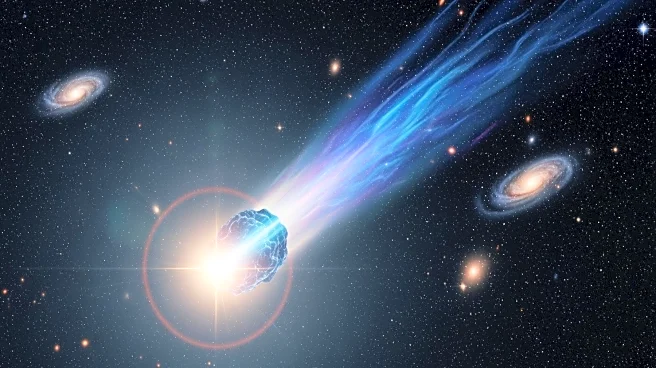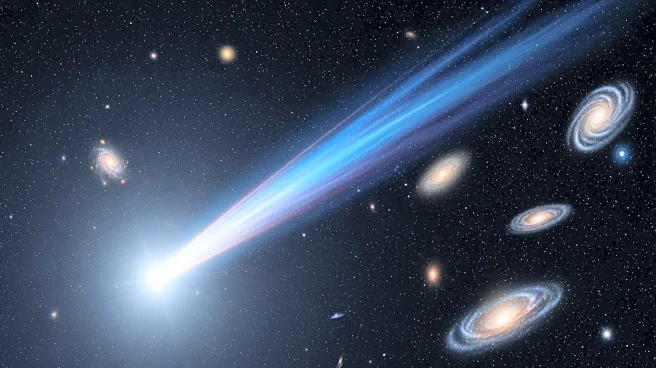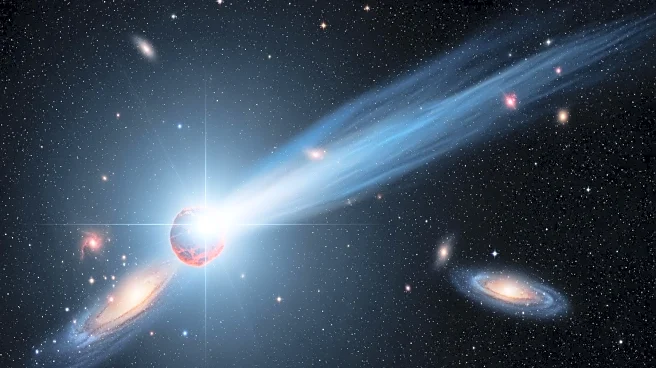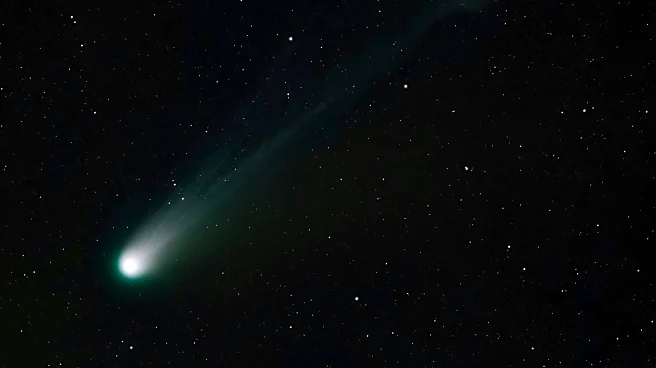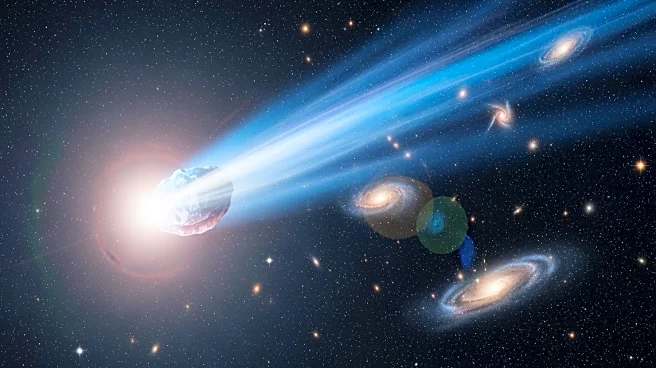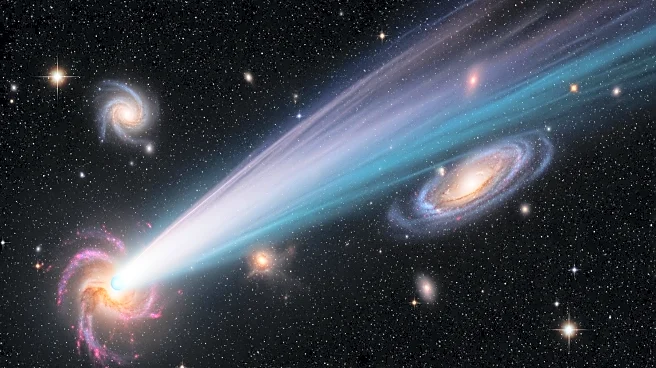What's Happening?
The interstellar comet 3I/ATLAS is nearing the sun, entering its most active phase. This comet, only the third interstellar object identified in our solar system, is expected to become more visible and
dramatic as it approaches its closest point to the sun on October 29. The comet, a mass of frozen gases and dust, is believed to be older than our solar system. As it nears the sun, the heat causes gas and dust to erupt from its surface, forming a bright halo and a long tail. NASA estimates the comet will pass within about 130 million miles of the sun. Research teams worldwide are preparing to observe the comet using both Earth-based and orbital telescopes, with some instruments on missions heading toward Jupiter being redirected to collect data.
Why It's Important?
The passage of 3I/ATLAS offers a rare opportunity for scientists to study material that may have formed around a distant star long before Earth existed. This event provides insights into the origins and composition of interstellar matter, potentially enhancing our understanding of the universe. The comet's activity as it nears the sun could reveal new information about the behavior of such objects under solar radiation. For the scientific community, this represents a fleeting connection to the wider galaxy, offering a chance to gather data that could inform future research and exploration.
What's Next?
As 3I/ATLAS continues its journey, it is expected to become visible again in early November, potentially appearing brighter and more dramatic. Scientists will continue to monitor the comet, collecting data that could provide further insights into its composition and behavior. Once it swings past the sun, the comet will continue its journey back into interstellar space, unlikely to return. The observations made during this period will contribute to ongoing research into interstellar objects and their interactions with our solar system.
